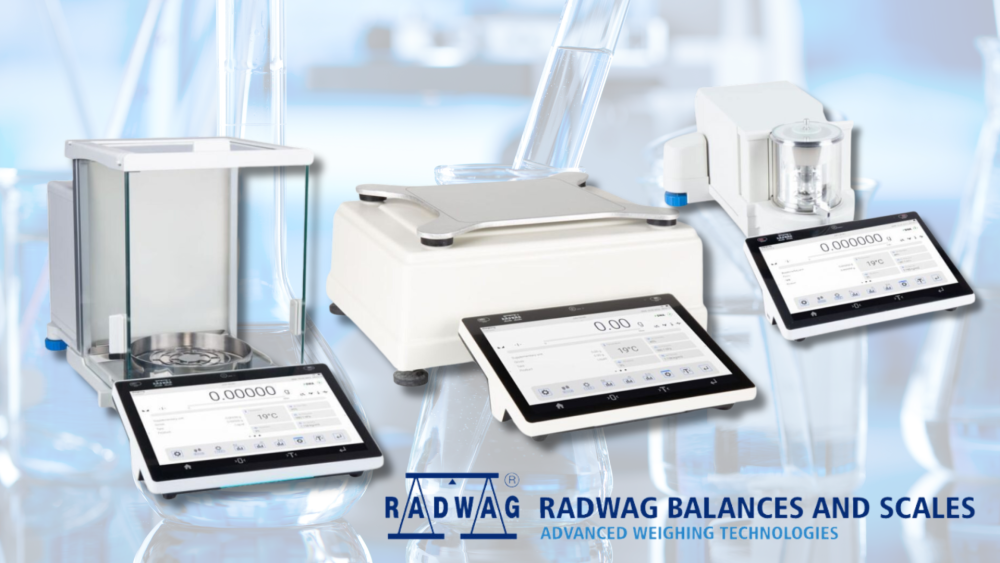Precision, microbalance, analytical, which does what? Which is right for my application?
There’s a whole plethora of digital balances used in laboratories, and choosing the right one for your specific application can quickly become overwhelming.
For professionals in scientific research, pharmaceuticals, chemistry, and various industries, selecting between analytical, precision, and microbalances needs to be more than an educated guess. Each type of balance is designed for specific needs and applications, offering different levels of sensitivity, capacity, and precision. Understanding the technical and practical differences between these types can make the selection process easier.
In this article, we at NWI Weighing will explain the key differences between these three types of balances, and we hope will help you to make an informed decision for your specific weighing requirements.
Analytical Balances
What Are Analytical Balances?
Analytical balances are high-precision instruments used for measuring small mass samples. They offer an exceptional degree of accuracy and are commonly employed in laboratories where even the slightest error can significantly impact results.
Key Features
Sensitivity: Analytical balances are designed with a readability typically ranging from 0.1 mg (0.0001 g) to 0.01 mg (0.00001 g). This high level of sensitivity makes them ideal for weighing substances where precision is the highest of importance.
Draft Shield: To ensure accurate readings, analytical balances are often equipped with a draft shield or an enclosed weighing chamber. This protects the sample from air currents, dust, and other environmental factors that might affect the measurement.
Calibration: Most analytical balances offer both internal and external calibration options, ensuring consistent accuracy and performance.
Capacity: They generally have a lower capacity compared to other balance types, typically up to 320 g, although specialised models can handle more.
Applications
Pharmaceuticals: For precise formulation and quality control.
Chemistry: In chemical analysis and substance preparation.
Research Laboratories: For experiments requiring exact measurements.
NWI’s Recommendation: XA 5Y Analytical Balance
Precision Balances
What Are Precision Balances?
Precision balances, also known as top-loading balances, offer a great combination of accuracy and capacity. They are less sensitive than analytical balances but provide greater capacity, making them suitable for a wide range of laboratory and industrial applications.
Key Features
Sensitivity: Precision balances typically offer a readability of 1 mg (0.001 g) to 0.1 g, striking a balance between precision and usability for larger samples.
Capacity: They can handle weights ranging from several hundred grams to several kilograms, making them versatile for different types of weighing tasks.
Durability: Designed with robust materials, precision balances are built to withstand regular use in various settings, including manufacturing and educational environments.
Ease of Use: Many precision balances come with user-friendly interfaces, multiple weighing modes, and connectivity options for data logging and analysis.
Applications
Manufacturing: For quality control and material testing.
Education: In schools and universities for teaching and research.
Fieldwork: Suitable for environments where portability and ease of use are essential.
NWI Recommendations: RADWAG PM.10.5Y Precision Balance

Microbalances
What Are Microbalances?
Microbalances are the most sensitive laboratory weighing instruments available, designed to measure ultra-small masses with incredible precision. They are crucial in fields where even the smallest weight changes can have significant implications, such as nanotechnology and advanced scientific research.
Key Features
Sensitivity: Microbalances offer an astounding readability from 0.1 µg (0.0000001 g) to 1 µg (0.000001 g), enabling the measurement of minute sample masses.
Advanced Technology: They incorporate sophisticated technologies to minimise external interferences, including specialised vibration-damping systems and temperature-controlled environments.
Capacity: While offering extreme sensitivity, microbalances typically have a limited capacity, often ranging from 1 g to 10 g.
Automation and Connectivity: Many microbalances feature automated processes and advanced connectivity options for integration with laboratory information management systems (LIMS).
Applications
Nanotechnology: For measuring particles at the nanoscale.
Pharmaceuticals: In drug development and quality control where precision is critical.
Chemical Research: For detailed analysis of chemical reactions and compound synthesis.
NWI’s Recommendation: MYA 5Y Microbalance
Balance Comparison:
Here’s a quick comparison to help you choose the right balance for your needs:
| Feature | Analytical Balances | Precision Balances | Microbalance |
| Readability | 0.1 mg to 0.01 mg | 1 mg to 0.1 g | 0.1 µg to 1 µg |
| Capacity | Up to 320 g | Several kg | 1 g to 10 g |
| Applications | Pharmaceuticals, Chemistry | Manufacturing, Education | Nanotechnology, Research |
| Features | High Sensitivity, Draft Shield | Robust, Versatile | Extreme Precision, Automation |
Choosing the most suitable balance for your needs:
When selecting the appropriate balance, consider the following factors:
Sensitivity Requirements: Outline the level of precision necessary for your specific applications. Analytical and microbalances offer higher sensitivity, while precision balances are suitable for general use.
Sample Size and Capacity: Consider the typical sample sizes you’ll be working with. Precision balances offer larger capacities, while analytical and microbalances focus on precision over quantity.
Environmental Conditions: Evaluate the environment where the balance will be used. Draft shields and specialised technologies in analytical and microbalances help to lower or diminish environmental influences.
Budget and Features: Identify your budget constraints and ideal features, such as connectivity, automation, and ease of use.
Summary
In summary, it’s good to get yourself in the know prior to shopping for balance options. Understanding the differences between analytical, precision, and microbalances is a crucial step for selecting the right balance for your tasks.
At NWI Weighing, our knowledgeable team is here to assist you in choosing the ideal balance for your laboratory or industry requirements. We have partnered with RADWAG Balances and Scales to offer a comprehensive range of balances designed to meet diverse needs. RADWAG is one of the largest worldwide manufacturers of electronic balances. Headquartered in Poland but with a global presence including the USA, RADWAG have grown astronomically in 38 years of business.
Contact us today to learn more about RADWAG balances, and how we can support your precision weighing needs.








Comments are closed.